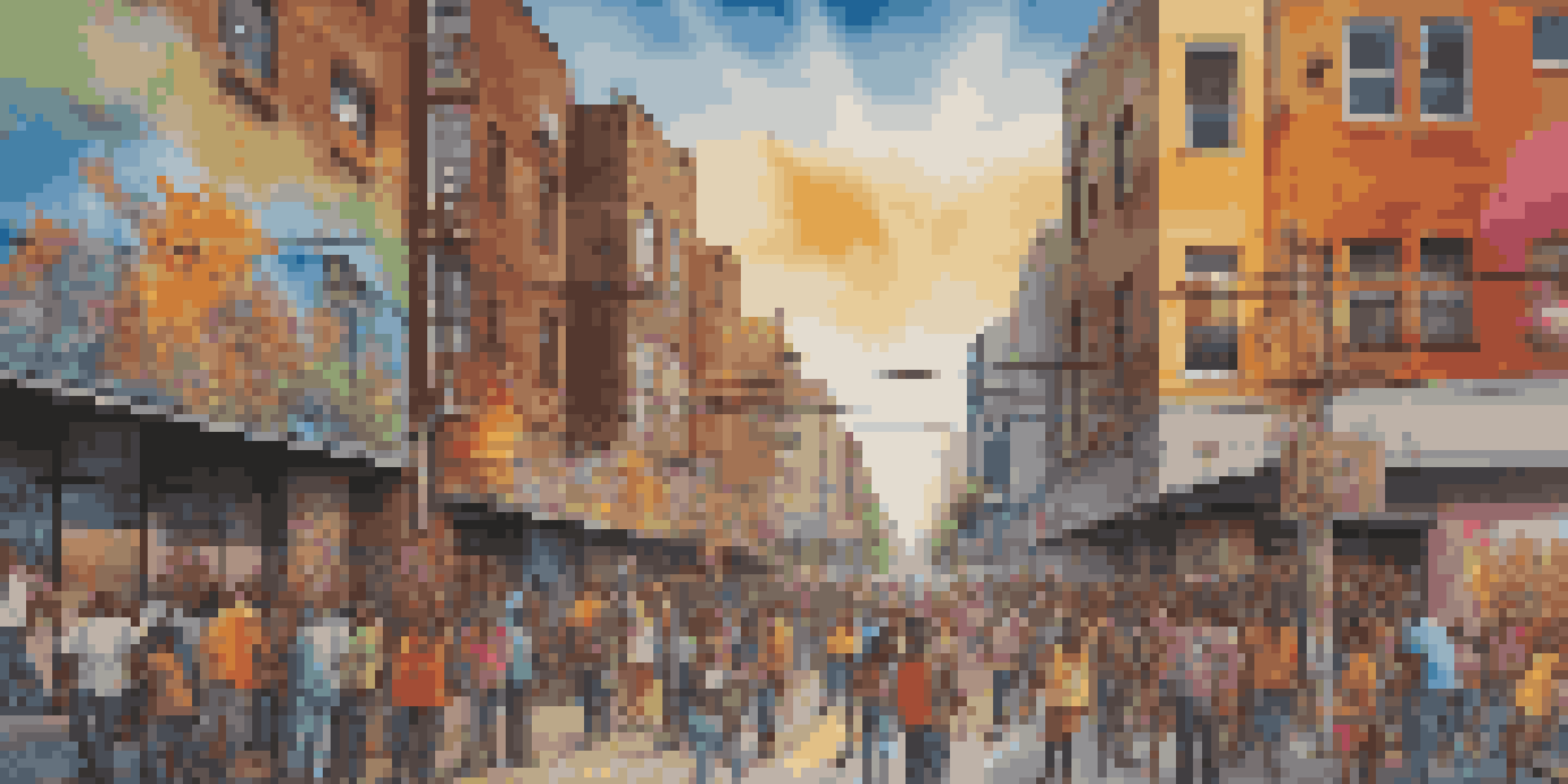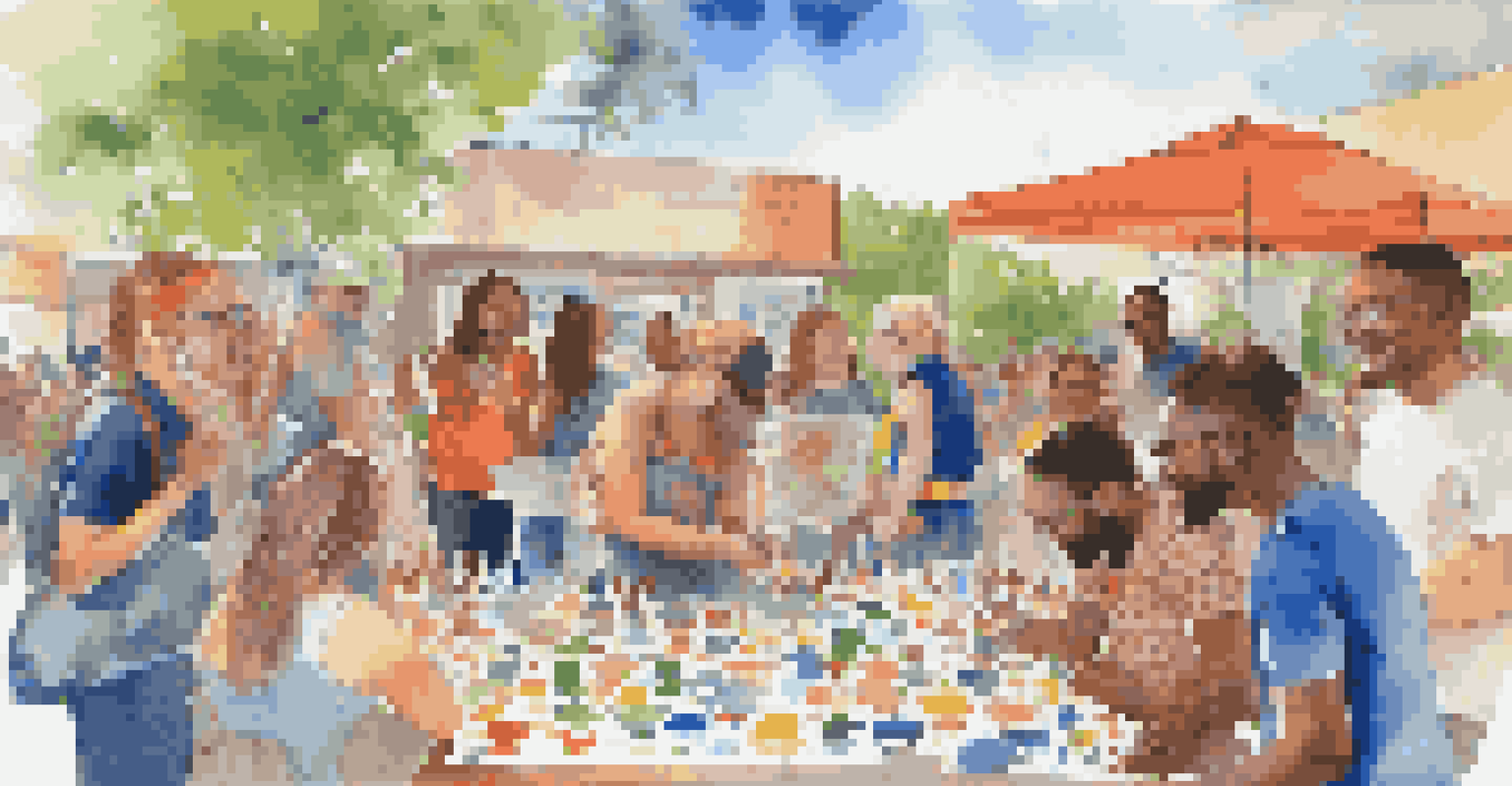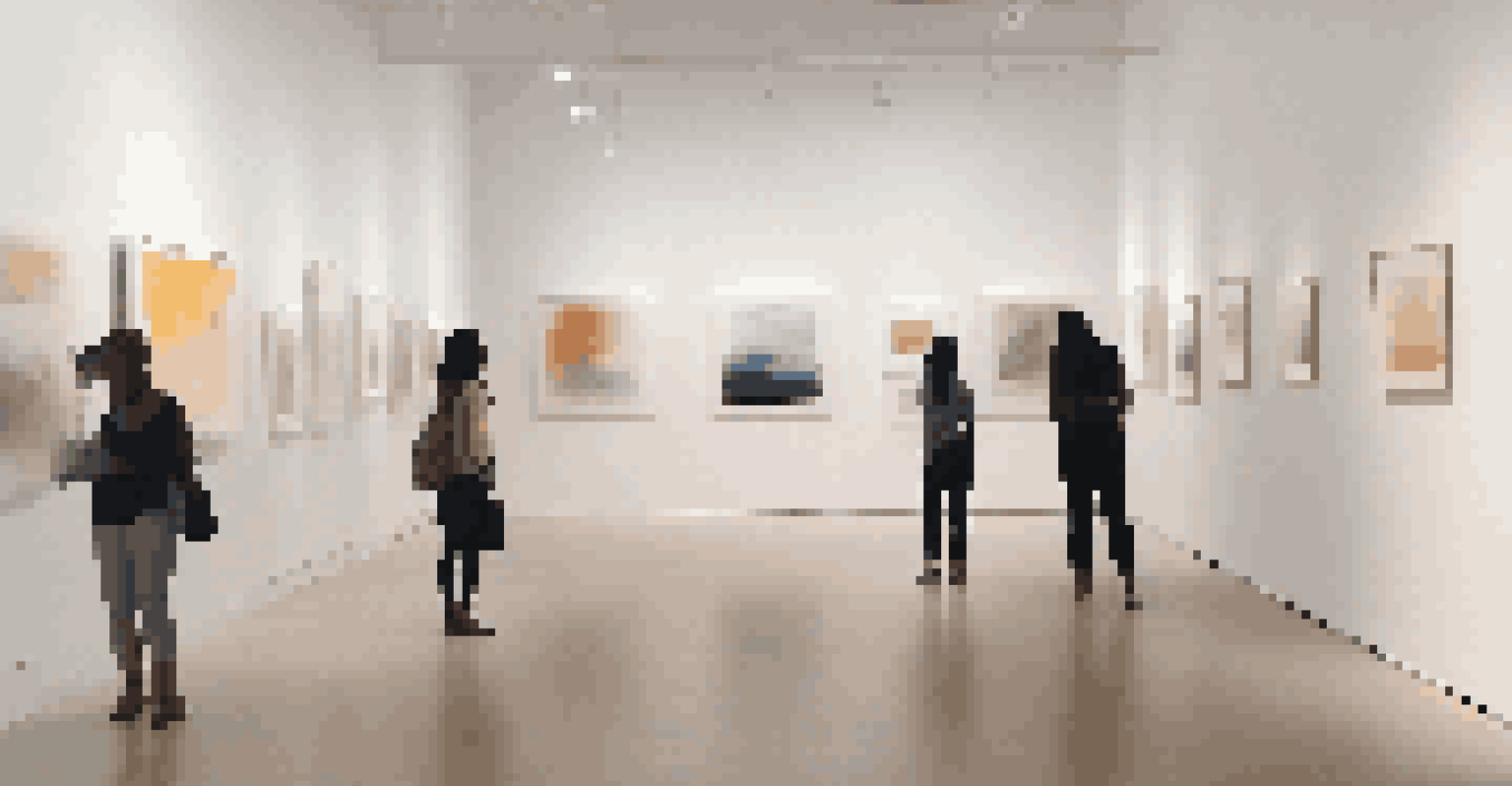Art and Globalization: Addressing Inequality Across Borders

Understanding Art's Role in Globalization
Art serves as a universal language, transcending borders and cultures. Through visual expressions, music, and performances, it fosters connections among diverse communities. This ability to communicate complex ideas and emotions can challenge social norms and spark conversations about inequality.
Art is the most beautiful of all lies; it is a powerful tool for change and can ignite a spark in the hearts of many.
As globalization expands, art becomes a tool for sharing stories that might otherwise go unheard. Artists often draw from their cultural backgrounds to highlight issues faced by marginalized groups. By amplifying these voices, art can initiate dialogue and inspire collective action across nations.
Moreover, the digital age has further enhanced the reach of art, allowing it to circulate globally in an instant. Social media platforms enable artists to share their work with a worldwide audience, thus democratizing access to art and its messages. This connectivity can challenge existing power dynamics and promote inclusivity.
The Impact of Cultural Exchange on Inequality
Cultural exchange through art can play a pivotal role in addressing social inequalities. When artists from different backgrounds collaborate, they create a rich tapestry that reflects a multitude of experiences. These collaborations can highlight shared challenges while celebrating diversity, fostering empathy and understanding.

For instance, international art festivals often showcase works from various countries, promoting dialogue about pressing issues such as poverty, discrimination, and climate change. These events not only bring visibility to these topics but also encourage local communities to engage with global concerns. This exchange of ideas can empower individuals to advocate for change.
Art as a Global Connector
Art transcends borders and cultures, fostering connections and sparking discussions on social issues.
Additionally, cultural exchange can help dismantle stereotypes and prejudices. By exposing audiences to different perspectives through art, we can challenge misconceptions and encourage more informed conversations. This shift in perspective can ultimately contribute to reducing inequality on a broader scale.
Art as a Catalyst for Social Change
Throughout history, art has often acted as a catalyst for social change. Movements like the Harlem Renaissance and the feminist art movement utilized creative expression to challenge societal norms and advocate for equality. Today, many artists continue this tradition, using their platforms to address contemporary issues.
Art is not freedom from discipline, but disciplined freedom.
For example, street art has emerged as a powerful form of protest, often addressing themes of social justice and inequality. Murals and graffiti can transform public spaces into canvases for dialogue, inviting communities to engage with important topics. This accessibility can inspire grassroots movements and mobilize communities to demand change.
Moreover, art can influence policymakers and institutions by shining a light on pressing issues. By conveying powerful narratives through various mediums, artists can sway public opinion and encourage political action. This interplay between art and activism is crucial in the fight against inequality.
Challenges of Globalization in the Art World
While globalization opens doors for artistic collaboration, it also presents significant challenges. One major concern is the commodification of art, where cultural expressions are reduced to mere products for consumption. This can lead to the erasure of the original context and meaning behind the artwork.
Additionally, the art market can perpetuate inequality by favoring established artists and galleries, often sidelining emerging voices from marginalized communities. This disparity can limit opportunities for underrepresented artists to gain recognition and support. As a result, their important narratives may remain unheard.
Cultural Exchange Fights Inequality
Collaborations in art promote understanding and empathy, addressing shared challenges while celebrating diversity.
Furthermore, the impact of globalization can sometimes lead to cultural appropriation, where dominant cultures exploit elements of marginalized cultures without proper acknowledgment. This not only undermines the original artists but can also perpetuate existing inequalities. Navigating these challenges requires a thoughtful approach to cultural exchange and appreciation.
The Role of Technology in Art and Globalization
Technology has revolutionized the art world, making it easier for artists to share their work and connect with global audiences. Online platforms and social media allow for instant dissemination of art, enabling artists from all corners of the world to gain visibility. This increased accessibility can empower marginalized artists to showcase their stories.
Moreover, digital art forms, such as virtual reality and interactive installations, are pushing the boundaries of how we experience art. These innovations can create immersive environments that engage audiences in new ways, encouraging them to reflect on social issues. Such experiences can foster empathy and understanding, bridging cultural divides.
However, the digital divide remains a challenge, as not all artists have equal access to technology. This disparity can limit the reach of certain voices and reinforce existing inequalities. Addressing these gaps is essential for ensuring that all artists, regardless of their background, can participate in the global art conversation.
Art Education and Its Impact on Inequality
Art education plays a crucial role in fostering creativity and critical thinking, yet access to quality programs is often unequal. Many marginalized communities face barriers to art education, limiting their opportunities to express themselves and share their stories. Increasing access to art education can empower individuals to challenge social norms and advocate for change.
Furthermore, integrating art into educational curricula can promote cross-cultural understanding among students. By learning about diverse artistic traditions and histories, students can develop a deeper appreciation for different cultures. This understanding can help combat stereotypes and foster a more inclusive society.
Technology's Role in Art Access
Digital platforms enhance visibility for marginalized artists, but disparities in access can reinforce existing inequalities.
Investing in community art programs can also provide vital resources for aspiring artists from underrepresented backgrounds. These initiatives can offer mentorship, funding, and exposure, helping to level the playing field in the art world. Supporting art education is essential for addressing inequality and nurturing the next generation of diverse voices.
Envisioning a More Equitable Art World
As we reflect on the intersection of art and globalization, it's essential to envision a more equitable art world. This means actively dismantling barriers that prevent marginalized artists from being heard and recognized. By prioritizing inclusivity and representation, we can create a vibrant artistic landscape that reflects the richness of our global society.
One way to achieve this is through intentional curatorial practices that prioritize diverse voices in exhibitions and collections. By showcasing works from underrepresented artists, galleries and institutions can inspire meaningful conversations about inequality and social justice. This commitment to diversity can foster a more inclusive cultural narrative.

Moreover, art patrons and collectors have a role to play in supporting emerging artists from marginalized communities. By investing in their work, they can help amplify important narratives that challenge the status quo. Together, we can build a more equitable art world that uplifts all voices, fostering creativity and connection across borders.